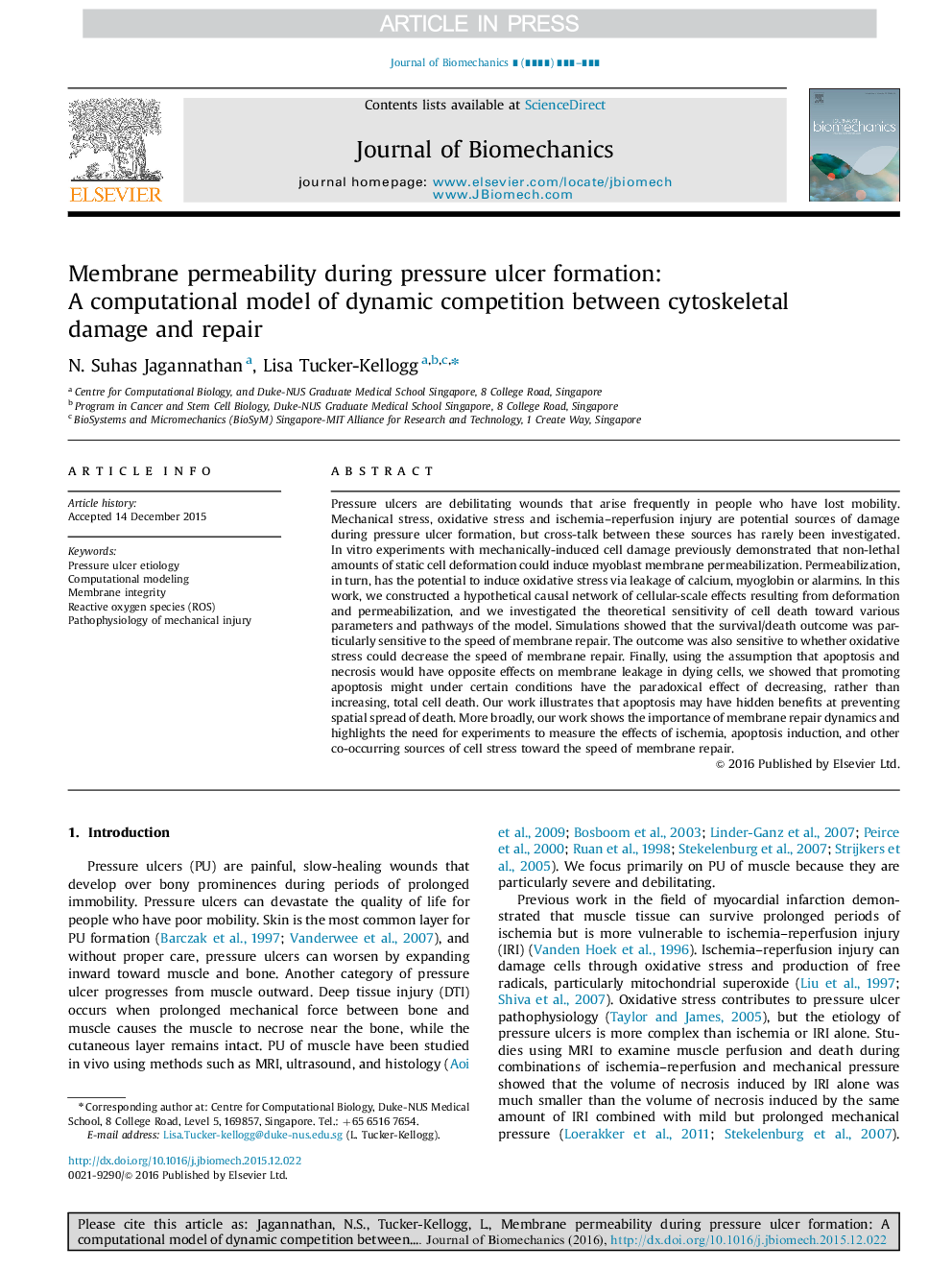| Article ID | Journal | Published Year | Pages | File Type |
|---|---|---|---|---|
| 10431116 | Journal of Biomechanics | 2016 | 10 Pages |
Abstract
Pressure ulcers are debilitating wounds that arise frequently in people who have lost mobility. Mechanical stress, oxidative stress and ischemia-reperfusion injury are potential sources of damage during pressure ulcer formation, but cross-talk between these sources has rarely been investigated. In vitro experiments with mechanically-induced cell damage previously demonstrated that non-lethal amounts of static cell deformation could induce myoblast membrane permeabilization. Permeabilization, in turn, has the potential to induce oxidative stress via leakage of calcium, myoglobin or alarmins. In this work, we constructed a hypothetical causal network of cellular-scale effects resulting from deformation and permeabilization, and we investigated the theoretical sensitivity of cell death toward various parameters and pathways of the model. Simulations showed that the survival/death outcome was particularly sensitive to the speed of membrane repair. The outcome was also sensitive to whether oxidative stress could decrease the speed of membrane repair. Finally, using the assumption that apoptosis and necrosis would have opposite effects on membrane leakage in dying cells, we showed that promoting apoptosis might under certain conditions have the paradoxical effect of decreasing, rather than increasing, total cell death. Our work illustrates that apoptosis may have hidden benefits at preventing spatial spread of death. More broadly, our work shows the importance of membrane repair dynamics and highlights the need for experiments to measure the effects of ischemia, apoptosis induction, and other co-occurring sources of cell stress toward the speed of membrane repair.
Related Topics
Physical Sciences and Engineering
Engineering
Biomedical Engineering
Authors
N. Suhas Jagannathan, Lisa Tucker-Kellogg,
